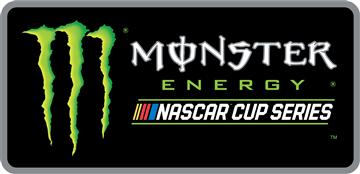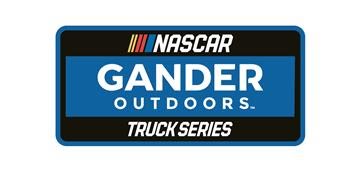Introducing Rookie Stripe: What Exactly is NASCAR?
 |
| Photo Credit: Logan Stewart |
When I stood on Pit Road for the first time at Darlington, the first NASCAR race of my life, I might as well have been standing in the middle of a foreign country. Riveted by the din of activity and the unfamiliar fast cars and smell of tires on a track, it was overwhelming. There’s so much to take in, and yes, it gets loud. But in the end, adrenaline
I’m excited to take on the Rookie Stripe column because my personal journey to becoming a racing fan is a complex and still-evolving one. For someone new, there’s so much to learn. I know that I’m very lucky to have closer access to NASCAR through my professional job, and I hope to help explain it to others who don’t know much about it, but want to learn. This will be a column for rookies, by a still sort of-rookie, so we can take on NASCAR together.
 |
| It's a wild ride inside the garage area Credit: Debbie Ross for Skirts and Scuffs |
The National Association for Stock Car Racing (NASCAR) is the governing body of stock car racing, overseeing three levels of racing. The most familiar NASCAR series is the Sprint Cup Series (which will change names after the 2016 season), with 43 cars and 36 races. Each car has a number (not necessarily between 1 and 43), and those numbers carry massive importance and affiliation for both fans and drivers.
Many Sprint Cup drivers earn their spot in the top series through the other levels of NASCAR: The NASCAR Xfiniity Series (previously known as the Nationwide Series) and the Camping World Truck Series for pickup trucks. Though not as well known to the general public, these tiers are home to many mega-talented drivers and up-and-comers.
Here are a few more basic facts to know in regards to the Sprint Cup Series
 |
| Credit: Charlotte Bray for Skirts and Scuffs |
- 36 NASCAR Sprint Cup races in a year include 26 in the regular season and 10 in the Chase for the NASCAR Sprint Cup.
- There are 43 car positions available in each race, but not always 43 cars in a race.
- Races take place
at oval-shaped tracks of varying lengths across the nation, and there are also two road courses during the regular season (Watkins Glen International and Sonoma Raceway). - Every track is different and presents different challenges.
The longest tracks are referred to as "superspeedways." - NASCAR has numerous colored flags used to help guide races and direct drivers. Each colored flag gives a different instruction to drivers.
- Sponsors are an important part of NASCAR. You’ll see their names everywhere and drivers will refer to them often.
- Stock cars, built in individual team race shops, can reach speeds o
f 200 mph and sometimes more. - Each driver has a crew chief and pit crew in pit stalls on Pit Road in the infield. The crew chief is always in communication with the driver. Drivers make pit stops during a race for fuel, maintenance and more, and some
stops are mandatory. - The driver who wins the race goes to Victory Lane to celebrate with his or her team. The winning
d river gets 43 points and the other 42 places descend in points, with one point for last place. Bonus points are awarded for winning the race (3 points), leading a lap (1 point awarded to all drivers who lead at least one lap), and leading the most laps (1 point). - The Chase for the NASCAR Sprint Cup is NASCAR’s championship. NASCAR introduced a new Chase format in 2014, increasing the number of eligible drivers from 12 to 1
6 . - Driver starting position is determined by qualifying, which takes place before the race.
For tracks 1.25 miles or longer- Round 1 involves all vehicles
- Round 2, the 24 fastest cars from round 1
- Round 3, the 12 fastest cars from round 2.
- For tracks less than 1.25 miles and road courses
- Round 1 includes all vehicles
- Round 2 includes the 12 fastest cars from round 1.
- If the qualifier is canceled due to rain, starting order is based on
points standings . Confusing? We’ll tackle the finer details of qualifying in a future post.
We’re wearing this rookie stripe together and have lots to learn -- so let’s hammer down and have fun! See you next time.
Is there a topic you'd like to learn more about? Leave a comment below and you may see your question addressed in a future edition of Rookie Stripe.
Introducing Rookie Stripe: What Exactly is NASCAR?
 Reviewed by Logan Stewart
on
Wednesday, January 14, 2015
Rating:
Reviewed by Logan Stewart
on
Wednesday, January 14, 2015
Rating:
 Reviewed by Logan Stewart
on
Wednesday, January 14, 2015
Rating:
Reviewed by Logan Stewart
on
Wednesday, January 14, 2015
Rating:





